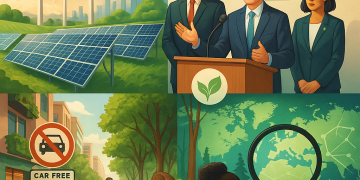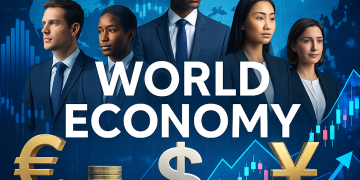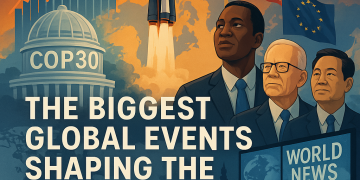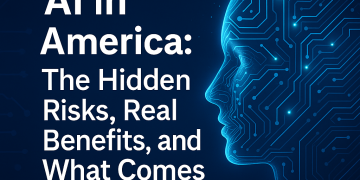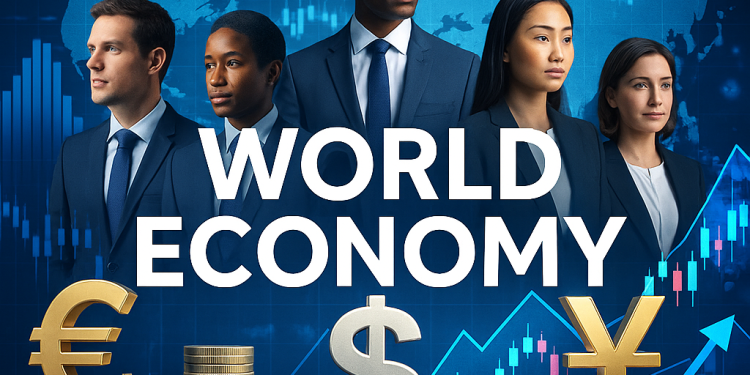Introduction: Why the World Economy Matters to Everyone
The world economy isn’t just something for Wall Street bankers or government officials to worry about. In 2025, global market trends affect everything—from the price of your groceries and gas to your job prospects and the value of your investments. In our hyper-connected era, a crisis or boom in one part of the world can send shockwaves everywhere else. That’s why staying informed about international finance, economic challenges, and the most important world business news isn’t just smart—it’s essential.
This comprehensive update will break down the key trends, risks, and opportunities in the global economy right now, using real-world examples, easy explanations, and a focus on what matters most for businesses, workers, and families.
1. The Global Economy in 2025: The Big Picture
After years of turbulence—pandemic recovery, geopolitical tensions, supply chain disruptions—the world economy is finding its balance. But it’s not a smooth ride.
- Growth is slowing: Most forecasts predict global GDP growth below 3%, with big differences between countries and regions.
- Inflation remains sticky: While down from 2022 highs, prices are still rising faster than pre-pandemic norms, especially for food and energy.
- Debt is a concern: Both government and private debt have reached record highs, limiting policy flexibility if new crises arise.
- Unemployment is uneven: Some economies face labor shortages (especially in tech, healthcare, and logistics), while others see high youth unemployment.
2. Key World Economy Trends in 2025
a. The Shift to Green and Digital Economies
The biggest global market trends are the pivot to sustainability and digital transformation:
- Green investment: Trillions are flowing into renewable energy, electric vehicles, and sustainable infrastructure. The EU, China, and the USA all have huge incentives and targets for net-zero emissions.
- Digitalization: The rise of AI, automation, and 5G is changing how business is done everywhere—from remote work in New York to digital banking in Nigeria.
- New industries: Clean tech, fintech, and biotech are creating jobs and opportunities, even as traditional sectors (like coal, oil, and brick-and-mortar retail) shrink.
b. Supply Chain Resilience
The shocks of COVID-19 and the war in Ukraine made clear how fragile global supply chains could be. In response:
- Companies are diversifying suppliers (the “China+1” strategy).
- “Nearshoring” and “friend-shoring” are trends—moving production closer to home or to politically friendly nations.
- Technology (blockchain, IoT) helps companies track products and reduce disruptions.
c. Shifting Centers of Economic Power
- Asia rises: China remains the world’s second-largest economy, while India’s growth outpaces everyone, especially in services and digital tech.
- Africa’s promise: A young, urbanizing population and new free trade areas are attracting investment, even as infrastructure and governance challenges remain.
- The US and EU: Both remain leaders in finance, tech, and innovation, but face political divisions, aging populations, and pressure to stay competitive.
d. The Changing World of Work
- Hybrid and remote work models are here to stay.
- Global talent pools mean workers and companies compete internationally.
- Automation and AI are reshaping manufacturing, logistics, finance, and even creative industries.
3. The Biggest Economic Challenges Facing International Markets
a. Geopolitical Tensions
The rivalry between the US and China affects everything—trade, tech, supply chains, and security. Sanctions, tariffs, and export controls are more common, adding uncertainty to global business.
The war in Ukraine and conflicts in the Middle East continue to disrupt energy and food supplies, especially in Europe and Africa.
b. Inflation and Interest Rates
Central banks (like the Federal Reserve and European Central Bank) have raised interest rates to fight inflation. This makes borrowing more expensive for businesses and consumers and slows economic growth. Emerging markets with dollar-denominated debt face extra pressure.
c. Debt Overhang
- Government debt: Many countries borrowed heavily during the pandemic to support citizens and businesses. Paying it back may require higher taxes, spending cuts, or both.
- Private debt: Companies and households with lots of debt are vulnerable if interest rates stay high.
d. Climate Risks
Extreme weather—floods, droughts, wildfires—can devastate crops, infrastructure, and communities. Insurance costs are rising, and some places are becoming “uninsurable.” Climate risks are now central to international finance.
e. Demographic Shifts
- Populations are aging in the West, Japan, and China, leading to worker shortages and rising healthcare costs.
- In contrast, Africa, India, and Southeast Asia have booming youth populations, which is both an opportunity and a challenge for education and jobs.
4. Opportunities in the World Economy
Despite the challenges, 2025 is also a year of opportunity for those who adapt:
a. Emerging Markets
Countries like Vietnam, Indonesia, Kenya, and Brazil are seeing strong growth, driven by manufacturing, digital services, and growing middle classes. These markets offer chances for investment and expansion—if businesses can manage risk.
b. Sustainable Finance
“Green bonds” and sustainable investments are mainstream, with trillions managed under ESG (environmental, social, and governance) criteria. Investors and consumers are demanding ethical, eco-friendly options.
c. Innovation in Healthcare
The pandemic turbocharged advances in biotech, telemedicine, and vaccine development. Aging populations and new diseases mean healthcare remains a global growth sector.
d. Digital Currencies and Fintech
Central bank digital currencies (CBDCs), cryptocurrencies, and mobile payment apps are changing how money moves, especially in emerging markets with limited banking infrastructure.
5. The Role of International Organizations and Policy
a. The International Monetary Fund (IMF) and World Bank
Both provide financial support and advice to countries in crisis or transition, but their approaches are under scrutiny—especially after criticism over austerity and debt management.
b. The World Trade Organization (WTO)
Trade rules are being tested by rising protectionism, digital commerce, and calls for reform to address new economic realities.
c. The United Nations
The UN’s Sustainable Development Goals (SDGs) guide policy, aid, and investment, focusing on poverty reduction, health, education, and climate action.
6. Table: Quick Look at Key Global Market Trends (2025)
| Trend | Description | Impact on Markets |
|---|---|---|
| Green Economy | Clean energy, EVs, sustainable infrastructure | New jobs, tech boom, regulatory risk |
| Digitalization | AI, automation, remote work | Productivity, job shifts, security |
| Supply Chain Resilience | Diversified sourcing, nearshoring | Cost increases, risk reduction |
| Demographic Change | Aging in West, youth in Global South | Healthcare, education, consumption |
| Financial Innovation | Fintech, CBDCs, ESG investing | Inclusion, volatility, new products |
7. What World Business News is Worth Watching in 2025?
- Mergers and acquisitions in tech, energy, and healthcare sectors signal where companies see the most opportunity.
- IPO booms and busts show investor confidence in new business models.
- Trade agreements and disputes (US-China, EU-UK, USMCA, RCEP) continue to shift the global playing field.
- Corporate sustainability moves—from Apple and Tesla to new green startups—indicate the direction of business and investment.
8. How Individuals and Businesses Can Respond
a. Diversify Investments
Don’t put all your eggs in one basket—consider global funds, green bonds, and a mix of sectors to reduce risk.
b. Upgrade Skills
Stay competitive by learning digital skills, financial literacy, and global cultural competence.
c. Embrace Flexibility
Be ready to pivot as markets, regulations, and technologies evolve—both in business strategy and career planning.
d. Watch for Warning Signs
Pay attention to debt levels, inflation rates, and geopolitical events. Early awareness can help avoid losses or seize opportunities.


